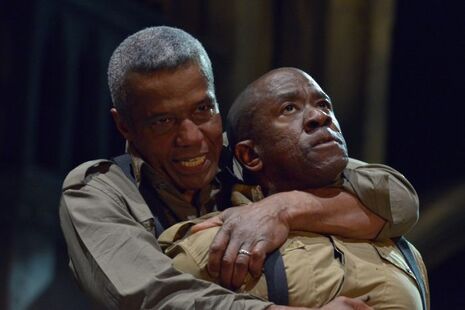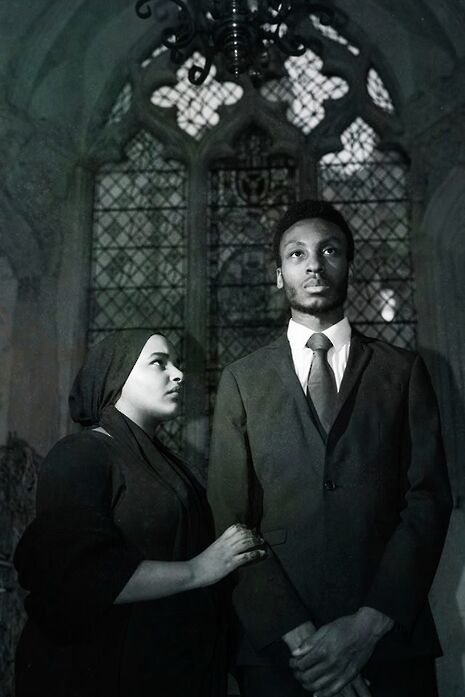Bardolatry and anti-blackness: can modern audiences ignore Shakespearean racism?
We cannot ignore the racism written into Shakespeare’s works, argues Vanessa Braganza – but modern theatre-makers can reinvent it

“I think this play is racist and think it is not.”
Shakespeare critic Virginia Vaughan’s echo of the titular character’s words in her analysis of Othello rings with irony and truth. If one thing is certain about Shakespeare and race, it is that nothing is certain – or so many critics would have it. Chronicling a fraught tension between racial hatred and human dignity, Shakespeare’s ethnic minority characters lay bare this tension.
There is a Bardophilic tendency to resist deterministic judgments on Shakespeare’s treatment of racial difference. But the collision of black and white in his writings does not produce the moralistic grey area that many would like to believe. Rather, it chronicles part of a liminal moment in the history of racial discrimination.
“There is a Bardophilic tendency to resist deterministic judgments on Shakespeare’s treatment of racial difference”
The language of black and white checkerboards across Othello. The hero’s downfall comes partly because he cannot manoeuvre across it. He moves through a minefield of racial hate speech, from being accused of witchcraft to being lewdly described as a black ram copulating with a white ewe. The racial loathing of Iago eventually undoes him, and rebuilds the racial barriers that his interracial marriage to Desdemona had demolished. Even the singularity of a black protagonist is subverted by the fact that Othello was played by a white actor in blackface on the Renaissance stage.

What often differentiates Shakespeare’s depictions of race in the eyes of audiences and readers is their contrast with the grotesque racial caricatures of other Renaissance writers. Barabas, the protagonist of Christopher Marlowe’s The Jew of Malta, is a cartoonish figure: he is first seen greedily counting his gold, and numerous references are made to his large nose – for which the actor would have worn a prosthetic. What a far cry from Shylock’s impassioned “Hath not a Jew eyes?” – an appeal to a shared humanity.
But at times, it seems that Shakespeare himself is most deaf to his character’s plea. Shylock, too, lapses into cartoonish cliché. Discovering that his daughter has eloped and stolen his money, he reportedly devolves into a comically alliterative mess, squawking, “My daughter, oh my ducats, oh my daughter!” The temptation to invoke a derisive stereotype, albeit through the mouthpiece of a minor character, was too much for Shakespeare to resist.
Contemporary Shakespeare productions have opened up a spectrum of new interpretations by refracting the language of the plays through different perspectives. Jonathan Pryce’s 2015 run as a cruel and extraordinarily poignant Shylock at The Globe in London is a case in point.
“Shylock tries to get revenge, sure,” Pryce told The Guardian, “but Antonio and the Christians, I think they’re monsters – those Bullingdon Club types who’ve persecuted him for years, spat on him, kicked him.”
Other productions alter Shakespeare’s intended chromaticity entirely. The Royal Shakespeare Company’s 2014 production of Othello cast Hugh Quarshie as a black Othello and Lucian Msamati as a black Iago. In 1997, Patrick Stewart staged a “photo negative” production, with a white Othello and an entirely black cast. These modern productions show the plays, not just from the Renaissance perspective, but from multiple racial perspectives.

How do the racial politics of the past provide a lens to view the present? Shakespeare’s depictions of racial difference are not ambiguous – nor should Bardolatry delude us into claiming that they are not, in part, racist. In fact, they show the collision of completely unambiguous perspectives: the friction between racist animosity and universal humanity. In doing so, they set a precedent for what comes after. Seventeenth-century productions of Othello were among the first examples of blackface, a tradition that would evolve into the clowning of vaudevillian blackface minstrel shows. The xenophobic language directed against Shylock and Othello anticipates centuries of hate speech, bigotry and racial violence.
From Jim Crow and the lynching of African Americans, to the Holocaust, to the Amritsar Massacre and other human rights abuses by the British Empire, to discriminatory policies by current world leaders targeting Muslims and minorities, the issues in Shakespeare’s plays are still at play. The plays present us not with ambiguities, but with a choice between unequivocal alternatives of hatred and humanity. Re-viewed in the present day, they compel us to realise that issues of racism are morally black and white – there is no grey area in questions of human dignity
 News / Night Climbers call for Cambridge to cut ties with Israel in new stunt15 April 2024
News / Night Climbers call for Cambridge to cut ties with Israel in new stunt15 April 2024 News / Police to stop searching for stolen Fitzwilliam jade17 April 2024
News / Police to stop searching for stolen Fitzwilliam jade17 April 2024 News / Cambridge University cancer hospital opposed by environmental agency12 April 2024
News / Cambridge University cancer hospital opposed by environmental agency12 April 2024 Interviews / In conversation with Dorothy Byrne1 March 2024
Interviews / In conversation with Dorothy Byrne1 March 2024 Features / Cambridge’s first Foundation Year students: where are they now?7 April 2024
Features / Cambridge’s first Foundation Year students: where are they now?7 April 2024



